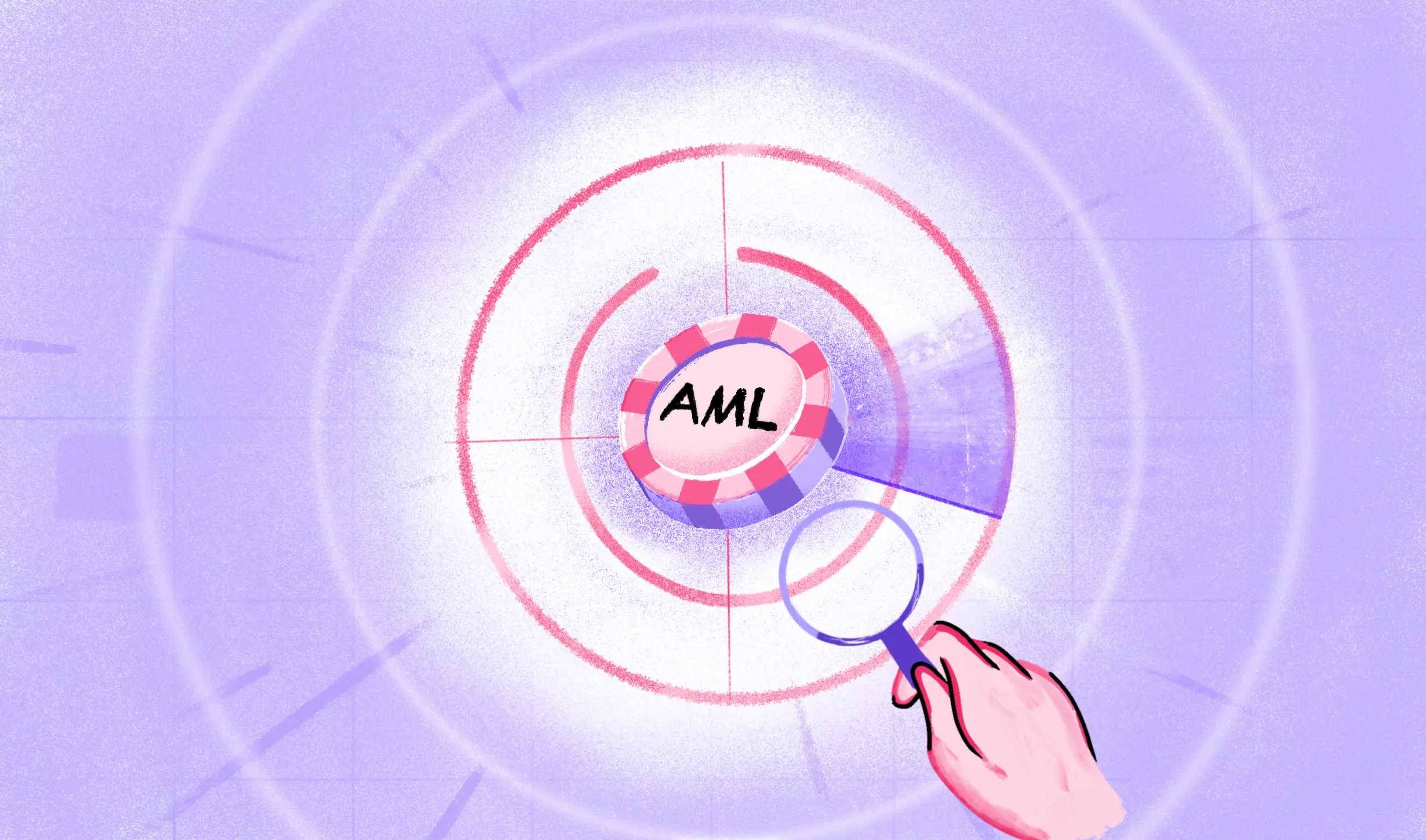Identity verification is a crucial aspect of financial services, ranging from traditional banks to cryptocurrency platforms. The process involves verifying the identities of clients to reduce the likelihood of criminal activity and comply with government regulations. One of the most efficient ways to accomplish this is through electronic identity verification (eIDV).
The process of electronic identity verification (eIDV) is constantly evolving due to changing regulations worldwide. Keeping up with these changes can be challenging, but in this guide, we have listed the eIDV trends that are shaping the industry in 2024 and beyond.
Let’s start with the basics.
What is electronic identity verification (eIDV)?
Electronic Identity Verification (eIDV) is a critical process in our increasingly digital world, essential for ensuring secure online interactions and compliance with regulatory requirements like Know Your Customer (KYC) and Anti-Money Laundering (AML).
eIDV is the act of verifying a person’s identity using digital or electronic means, whether through a computer or mobile device. The electronic verification process involves using technology to authenticate and validate the user’s identity, typically in an online or digital environment. Instead of traditional paper-based methods, the eIDV process leverages various electronic sources and databases to validate personal information like name, date of birth, and address.
The increasing shift towards digital solutions for online transactions and remote business dealings has made eIDV more relevant than ever. It uses electronic means like online user authentication or biometric verification, ensuring secure and reliable identity verification. This not only aids in preventing identity theft and mitigating fraud risks but also plays a crucial role in ensuring secure online transactions.
What types of businesses use eIDV?
Electronic Identity Verification (eIDV) is crucial across various industries, enhancing security and ensuring regulatory compliance.
Financial services
Banks and financial institutions use eIDV for adhering to Know Your Customer (KYC) and Anti-Money Laundering (AML) regulations. They verify customer identities using biometrics, document verification, and AI-driven processes.
Know more: eIDV for Fintechs
Healthcare
In healthcare, eIDV secures patient information and streamlines healthcare delivery, playing a key role in remote services and adherence to privacy regulations.
eCommerce
ECommerce platforms employ eIDV to combat fraud and secure transactions, reducing risks like identity theft. This enhances consumer protection and strengthens the credibility of online businesses.
Know more: eIDV for eCommerce
Government services
Governments use eIDV for citizen identity authentication in online services like license applications and benefits, enhancing efficiency and reducing identity fraud risks.
Travel and hospitality
Travel and hospitality businesses, including airlines and hotels, leverage eIDV to prevent fraudulent bookings and improve security, ensuring a safer travel experience.
Apart from these, eIDV also plays a crucial role in crypto, gaming, and EdTech sectors.
Advantages of electronic ID verification (eIDV)
Electronic Identity Verification (eIDV) is not just a compliance tool; it’s a game-changer for businesses in various sectors. Let’s explore some of its key advantages:
1. Multi-layer security
eIDV provides enhanced security through multi-layered approaches, including AI and machine learning. These technologies minimize human error and use multi-factor authentication, making it nearly impossible for fraudsters to bypass the system. This level of security is crucial in protecting businesses and their customers from data breaches and fraudulent activities.
2. Enhanced customer experience
The implementation of eIDV leads to a more user-friendly experience for customers. It simplifies processes like the onboarding process, where customers can easily upload necessary documents and get verified in seconds, even remotely. This efficiency not only saves time for both businesses and customers but also promotes a more positive interaction with the brand.
3. Reduced risks
By verifying the authenticity of identities, eIDV significantly reduces the risk of fraudulent activities. These systems are designed to detect suspicious activities and prevent scammers from using fake identities to exploit business resources or take customer information and accounts. This proactive approach in risk management is essential for maintaining the integrity and trustworthiness of businesses.
4. Automated compliance
eIDV helps businesses comply with legal regulations such as AML (Anti Money Laundering) directives and other governmental mandates. Non-compliance can lead to substantial financial penalties and damage to the company’s reputation. By automating the compliance process, implementing eIDV also ensures that businesses adhere to these regulations efficiently and effectively, thereby avoiding potential legal and financial repercussions.
5. Long-term relationships
By providing a secure, efficient, and user-friendly process to verify identity, eIDV helps businesses build long-term relationships with their customers. Trust is a critical component of customer loyalty, and eIDV contributes to this by ensuring the security and privacy of customer data. This trust, in turn, translates into sustained customer engagement and loyalty over time.
Types of electronic identity verification (eIDV)
Electronic Identity Verification (eIDV) employs various methods to ensure the authenticity and legitimacy of an individual’s identity. Let’s delve into the key types of eIDV:
1. Document verification
This involves users taking photos of their identification documents using smartphones or webcams. Trained AI then automates the verification process by examining the visual, data, and metadata elements of each document. Additional security features can be unlocked with NFC-enabled smartphones and physical documents.
Know more: Document verification
a. Proof of address checks
Proof of address verification is part of customer due diligence processes. Customers provide pictures of documents like bank statements or utility bills, and AI verifies their authenticity. This process is essential for confirming an individual’s residence and ensuring compliance with regulatory requirements.
b. SSN checks
In the United States, Social Security Number (SSN) checks are vital for against fraudulent documents and protecting against synthetic identity fraud. Customers submit their SSN, name, and date of birth online, and these details are verified against the Social Security Administration’s records.
2. Database checks
Database checks involve comparing the information a user submits with the data found in databases such as credit bureaus, voter registers, and utility databases. This process helps verify the individual’s identity based on the recorded data.
3. Biometric verification
Biometric verification is a pivotal component of eIDV, utilizing unique biological traits to confirm and verify identity itself.
a. Facial recognition and liveness detection
This method involves using facial recognition technology as a means of identity verification. Users take a photo or video of their face with a smartphone, and AI compares this image to the photo on their ID document. Additionally, liveness detection is implemented to ensure the person is physically present. This technology is designed to identify and prevent fraud attempts using photos, videos, or masks, enhancing the security and integrity of the customer’s identity verification process.
Read more about liveness checks and benchmarks to look out for.
How is eIDV used for KYC and AML?
Electronic Identity Verification (eIDV) plays a crucial role in the Know Your Customer (KYC) and Anti-Money Laundering (AML) processes, particularly through Politically Exposed Persons (PEP) screening and watchlist screening. These methodologies are instrumental in ensuring financial security and regulatory compliance.
1. PEP screening
PEP screening is increasingly significant in the financial sector due to the high risks associated with Politically Exposed Persons. These individuals, who hold or are closely associated with those in high-profile public positions, are scrutinized for potential involvement in corruption and money laundering activities.
The screening process, which leverages technology, involves checking these individuals against PEP databases and sanctions lists. This ensures that financial institutions are not inadvertently involved in illicit financial activities by associating with high-risk individuals. For example, if a bank receives a loan application from a government official, PEP screening is conducted to ensure the individual is not engaged in illegal activities.
PEPs include not only the individuals in these high-influence positions but also their immediate family members and close associates. This extended definition is due to the potential risks posed by these connections, as they may be involved in similar activities or exert influence on behalf of the PEP.
2. Watchlist screening
Watchlist screening is a vital component of AML compliance programs in financial institutions. It involves thorough checks against various watchlists and sanctions lists to prevent individuals involved in financial crimes, such as money laundering, terrorism financing, or scams, from accessing the financial system.
The process starts with verifying the individual’s name against multiple sources, followed by checking against different watchlists, including global and government ones. A match with any of these lists triggers an alert within the financial institution.
AML screening solutions used for watchlist screening source their data from various authoritative sources. These include lists consolidated by the Office of Foreign Assets Control (OFAC), the European Union (EU), denied individuals lists of PEPs worldwide, databases of Interpol, inter-government and state-specific agencies, FATF’s greylists and blacklists, and information from regulatory bodies like SEC and FINMA. This comprehensive approach ensures that financial institutions can effectively mitigate risks and comply with regulatory requirements.
Know more: How to attain AML compliance
Global eIDV trends to watch out for
The landscape of Electronic Identity Verification (eIDV) is constantly evolving, driven by technological advancements and regulatory changes. Here are some key global trends in eIDV to watch out for:
1. EU’s electronic identification and signature (eIDAS) regulation
The eIDAS Regulation has been a significant milestone in creating a predictable regulatory environment for electronic transactions on public websites within the EU. It allows citizens and businesses to use their national electronic identification schemes (eIDs) to access public services online in other EU countries and creates a European internal market for trust services.
2. UK government’s trust framework
The UK’s Digital Identity and Attributes Trust Framework is an initiative that aims to establish standards for digital identity verification. It is a part of the government’s broader strategy to make digital identities as trusted and as widely recognized as passports. The framework outlines the principles, policies, and standards necessary to establish a secure and interoperable digital identity system.
Read more about passport verification here.
3. ID wallet solutions
New ID wallet solutions are emerging as a significant trend, providing a secure mobile app to store digitalized and encrypted versions of ID documents, such as identity cards, driver’s licenses, vehicle registration, birth certificates, and healthcare credentials. These wallets allow citizens to prove their identity and rights online and in-person, enabling them to share only what is necessary for verification.
4. The future of biometrics
Biometrics are becoming increasingly central to eIDV, with a focus on cyber security, privacy, and the maturity of digital identity. The use of AI in biometric systems is a key trend, creating opportunities for enhanced data security and the detection of AI-generated deepfakes. However, it also raises concerns about the application of these technologies and the need for robust standards and governance frameworks.
Read more about the future of biometrics.
5. Digital driver’s license
Digital driver’s license projects are gaining momentum in countries like the USA, Korea, UK, Australia, Denmark, and the Netherlands. These initiatives represent a move towards more digitalized forms of traditional identification, offering a blend of convenience and enhanced security.
6. AI and machine learning
AI and machine learning are playing an increasingly vital role in eIDV. The integration of AI in eIDV software is poised to transform how identities are verified and managed, making the process more secure and user-friendly.
The future of digital identity verification
As we advance into 2024, the landscape of Digital Identity Verification is undergoing significant transformations. Trends indicate a shift towards more stringent digital ID checks across various industries, emphasizing the battle against bots, trolls, and fake news. The adoption of digital IDs and mobile driver’s licenses is on the rise, enhancing convenience and security in identity verification processes. Additionally, advancements in fraud prevention techniques, particularly in ID scanning, are becoming increasingly important in a variety of sectors.
With the continued sophistication of fake IDs and deepfakes, powered by generative AI and machine learning, the challenge for eIDV systems is to stay ahead of fraudsters. Moreover, evolving government regulations and consumer privacy laws, like the Digital Identity Act and the California Consumer Privacy Act (CCPA), are shaping the way businesses handle identity verification. These developments underscore the need for flexible and robust eIDV solutions that can adapt to these changing dynamics.
HyperVerge offers reliable solutions for identity verification that prioritize security, compliance, and user experience for businesses navigating evolving challenges.Want to give it a spin? Get a demo now.

 US
US
 IN
IN









